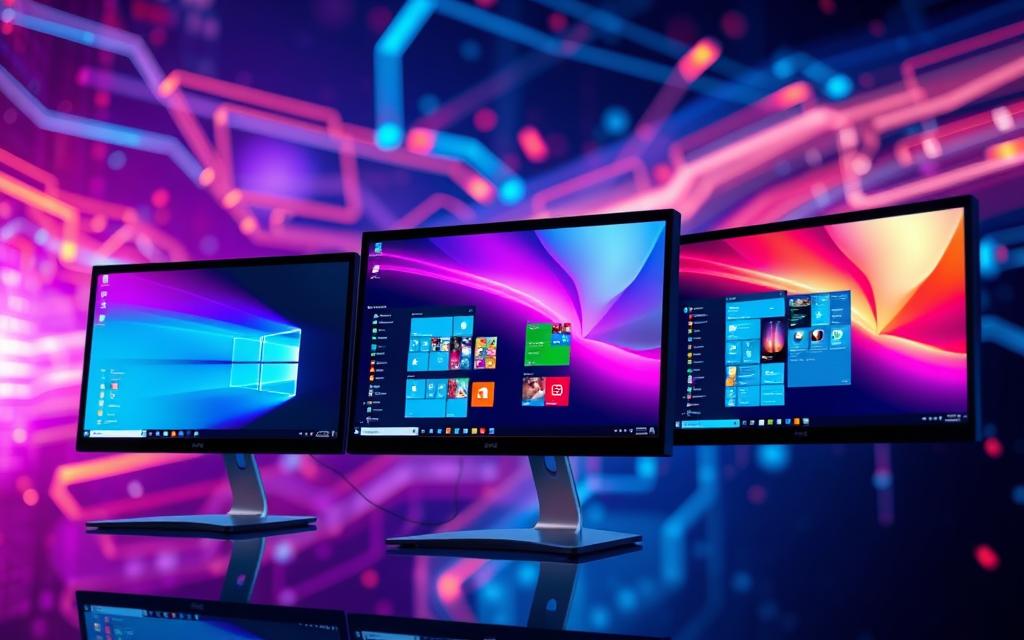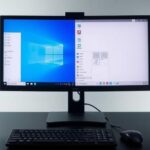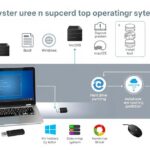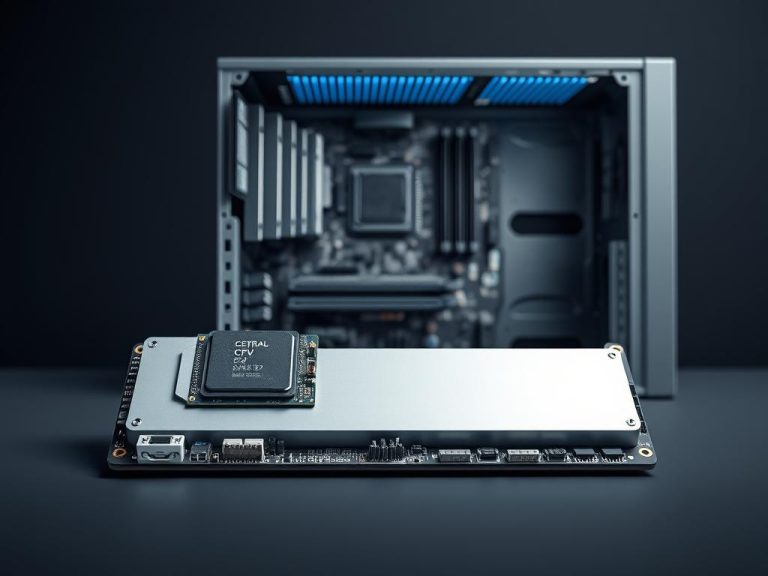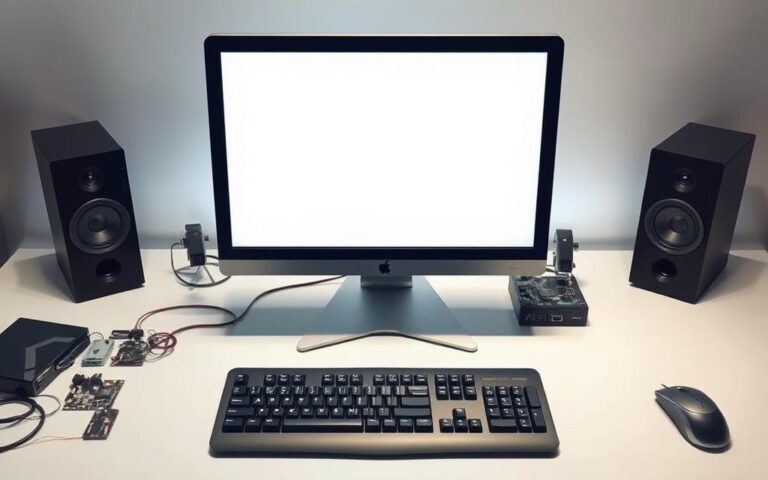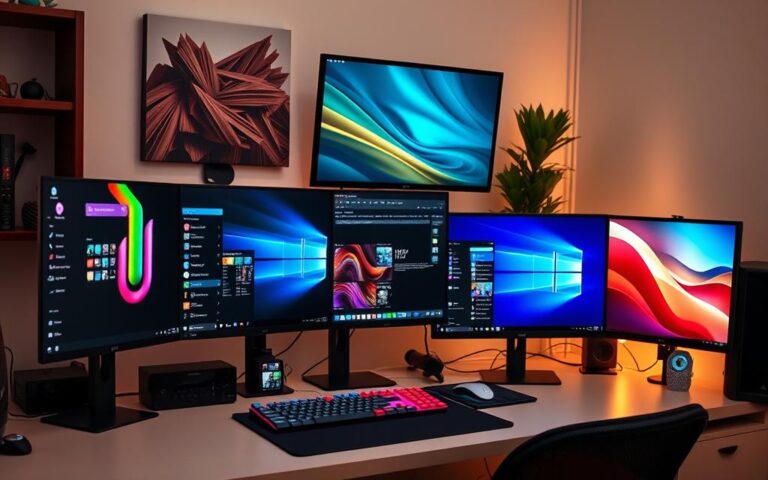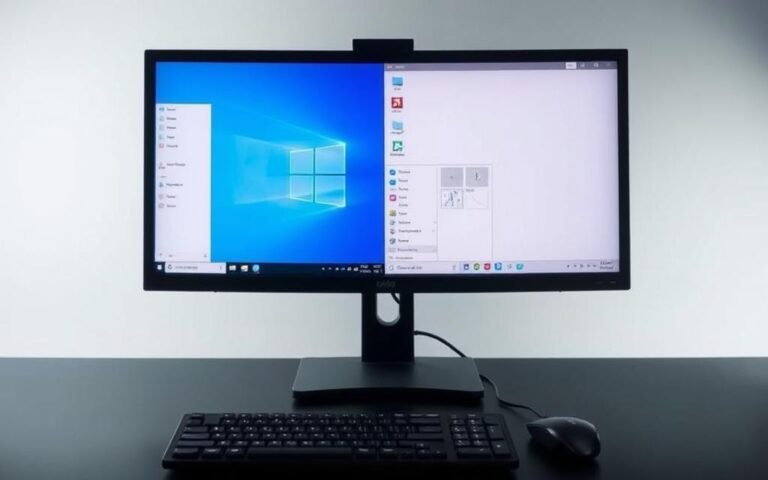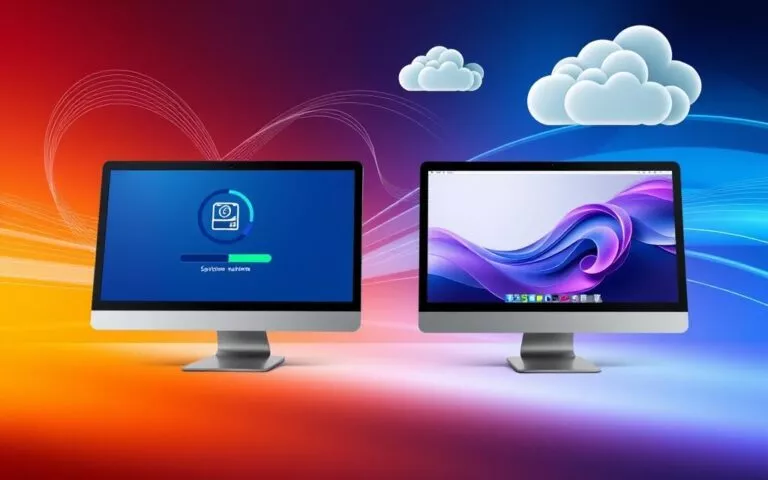How to Run Multiple Operating Systems on One Computer
As technology grows, the need for multiple operating systems on one computer is rising. This is true for developers testing applications or users wanting the best from both Windows and Linux. We will look at how to achieve this, focusing on dual-booting and virtual machines.
It’s vital to understand what these systems can do. The release of Windows 11’s 23H2 version shows how operating systems keep evolving. Users may benefit from using different versions, like Windows 10. To get started, make sure your computer has enough space – around 50-100GB is good for dual-booting. A survey found 65% of IT specialists use dual-boot setups, mainly combining Windows and Linux.
Starting involves making a bootable USB and setting up your BIOS correctly. This opens up the exciting possibilities that come with dual-booting and virtual machines.
Understanding the Need for Multiple Operating Systems
Today’s tech world often needs us to use different systems. The benefits of multiple operating systems are clear for both individuals and companies. Having more than one OS on a computer allows for trying new things, boosts productivity, and makes sure different apps work well together.
Benefits of Using Multiple OS
Choosing to use several operating systems has many perks. Key advantages include:
- Software Compatibility: Various OSes meet different software needs, letting users run programs not available on their main OS.
- Isolation: This creates separate spaces for work, which helps with secure tasks or different projects.
- Cost Efficiency: By using different OSes at once, you can save money instead of buying new hardware.
- Optimal Performance: Adjusting your computer to match application needs leads to better performance, especially for demanding tasks.
Common Use Cases
Finding the right use cases for different OSes shows how they can be beneficial. Important examples include:
- Software Development: Developers often switch between platforms to test their apps, making dual-booting a necessity.
- Gaming: Some games work better on certain systems, so having multiple OSes can enhance the gaming experience.
- Legacy Applications: Companies might use old software that only runs on specific OSes. Creating special environments keeps these apps going.
Discovering the advantages of multiple operating systems opens up new possibilities in computing. Using various OSes lets users customize their tech, improving their digital life.
Can You Run Two Operating Systems on One Computer?
Many users wonder if they can run two operating systems on one PC. This is possible, but there are technical hurdles. For example, Apple’s ARM architecture could affect how well different systems work together.
Technical Limitations To Consider
To run two systems, your computer’s hardware is key. Mixing Windows 10 with its newer version, Windows 11 23H2, needs 20-25GB of spare storage. If there’s not enough space, you might not be able to start the second system.
RAM is just as important, with 8GB being the sweet spot for good performance. This is especially true for running virtual machines. Mac users aiming to dual-boot need an Intel-based Mac for Boot Camp partitioning.
BIOS settings may need changes, like turning off Secure Boot, to add another operating system. Even though many PCs can handle two systems, there could be software issues to deal with.
| Technical Aspect | Requirement | Consideration |
|---|---|---|
| Storage Space | 20-25GB | Required for dual-booting Windows 10 and 11 |
| RAM | At least 8GB | Recommended for virtual machines |
| Processor Type | Intel (for Mac) | Necessary for Boot Camp setup |
| BIOS Settings | Secure Boot Disabled | Must be adjusted for dual-boot installation |
Methods to Install Multiple Operating Systems
Installing different operating systems on one computer increases its functions. It allows for custom experiences based on unique needs. Two main methods include dual-booting methods and using virtual machines. Each has its own benefits, depending on what the user needs.
Dual-Booting: An Overview
Dual-booting lets you have different operating systems on the same computer. It involves dividing the hard drive. You have to restart the computer to switch systems. This can be tricky because you have to manage a boot loader. For example, one might dual-boot Windows 10 with Windows 11 (23H2). It’s wise to have 50-100GB of free space for a new partition.
To dual-boot, you usually need to:
- Turn off Fast Boot and disable Secure Boot.
- Create a bootable USB with Rufus or EaseUS OS2Go.
- Change the boot order in the BIOS.
- Install the second OS in the right partition for it to work.
Virtual Machines: A Versatile Alternative
A virtual machine lets an operating system run inside another using special software. With a virtual machines overview, tools like VMware, Parallels, and VirtualBox let you run multiple systems at once. They share your computer’s RAM, CPU, and GPU. This method is great for multitasking and testing new systems safely without affecting the main system.
Virtual machines have many advantages, such as:
- Operating different OSes at the same time to get more done.
- Offering a secure space for trying things out, keeping the main system safe.
- Letting you use many platforms without restarting your computer.
Comparison of Dual-Booting vs Virtual Machines
Choosing between dual-booting and virtual machines involves looking at speed, how they use resources, and keeping data safe. Dual-booting is often faster for tasks that need a lot of power, like gaming or editing videos. This is because it uses all of a computer’s hardware. Virtual machines are more flexible and make it easy to change between systems. But, they might run slower since they share resources with the main system.
The table below shows the main differences between dual-booting and virtual machines:
| Aspect | Dual-Booting | Virtual Machines |
|---|---|---|
| Performance | Best for tasks that need a lot of power | May run slower because they share resources |
| Ease of Switching | Needs a restart | Easy to change within the main OS |
| Installation Complexity | Harder because you need to divide the hard drive | Simpler with the right software |
| Safety and Testing | Other OSes might be at risk | Provides a safe space for testing in isolation |
Choosing between dual-booting and virtual machines depends on what you need, what resources you have, and how you plan to use them. Making an informed choice can greatly improve your computer use. For more information on installing different operating systems, visit this resource.
Step-by-Step Guide to Dual-Booting
Setting up a dual-boot system might seem tough at first. Yet, a step-by-step method makes it easier. Start by getting your computer ready. Before partitioning your hard drive or installing a new OS, back up your data. This protects your files from any loss during setup.
Preparing Your Computer
First, turn off Fast Boot for a smoother setup process. You also need to tweak settings in the BIOS. This includes disabling Secure Boot, allowing both OS to work well together. Also, make the USB drive a priority in the boot sequence. Don’t forget to save these changes before you exit BIOS.
Partitioning Your Hard Drive
Now it’s time to divide your hard drive. Use Windows’ Disk Management to allocate 20-25GB for the new OS. This space lets the second OS run smoothly. Then, prepare a bootable USB, crucial for the new OS installation. This step paves the way for an easy install.
Installing the Second Operating System
After partitioning, start the installation. Boot the computer from the USB and format the new partition as instructed. Adjust the installation settings to fit your requirements. Following a successful install, reboot and choose the OS you want from the boot menu. Thanks to the dual-boot setup, using two operating systems becomes simple, enhancing your computer’s functionality.
FAQ
What are the advantages of using multiple operating systems on one computer?
Using multiple operating systems lets you try out different OSes without needing separate machines. This has many benefits. Some benefits include better software compatibility, the chance to have separate workspaces for different tasks, and increased security. It’s great for developing software, gaming, and using older software.
Can I run two operating systems on my computer?
Yes, you can install multiple OSes on most computers. But, you need enough RAM, storage space, and the right motherboard setup. Sometimes, you might need dual CPU configurations to share resources. Think about these things before you get started.
What methods can I use to install multiple operating systems?
There are two main ways to install multiple OSes: dual-booting and using virtual machines. Dual-booting splits your hard drive and needs a reboot to switch OSes. Virtual machines let you run several OSes at the same time inside your main operating system. You can use tools like VMware, Parallels, or VirtualBox for this.
What are the steps involved in setting up a dual-boot configuration?
First, always back up your data to keep it safe. Then, make a bootable drive using something like Rufus, with the ISO file for the new OS. Next, split your hard drive using Disk Management in Windows. Finally, install the second OS carefully, setting up the drives and installation options the right way.
What should I consider regarding the technical limitations when running two operating systems?
It’s vital to think about technical issues like needing enough RAM and storage. Your motherboard must also match. Be aware of possible software clashes and the risk of damaging an OS when you’re setting up dual-booting.
How do dual-booting and virtual machines compare in terms of performance?
Dual-booting usually works faster and smoother because it gives an OS full access to your computer’s resources. But, switching OSes means you have to reboot. Virtual machines are more flexible and easier for beginners but might run slower because they share resources. Whether you choose one over the other depends on if you prefer speed or ease of use.

